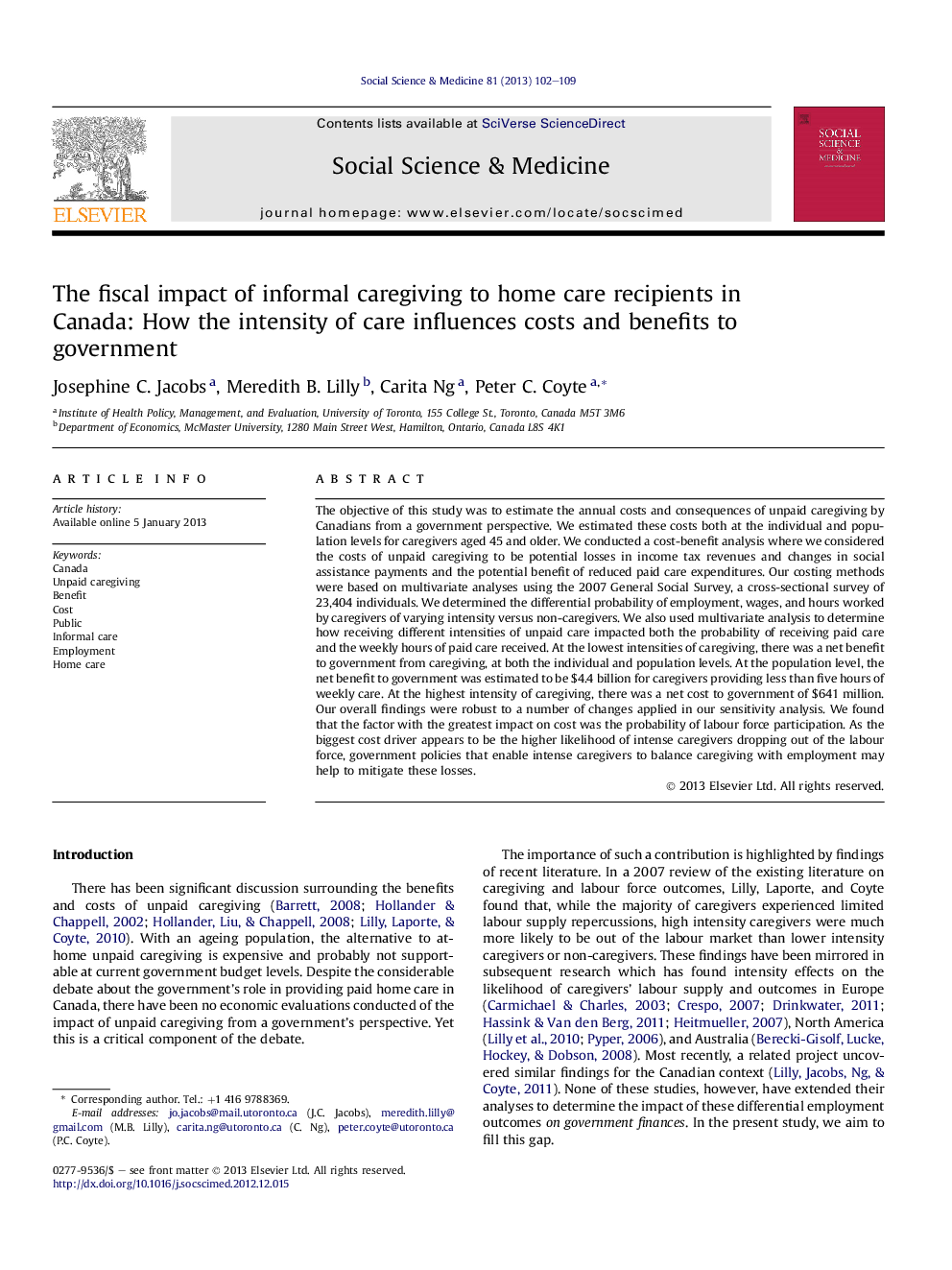| کد مقاله | کد نشریه | سال انتشار | مقاله انگلیسی | نسخه تمام متن |
|---|---|---|---|---|
| 952335 | 1476087 | 2013 | 8 صفحه PDF | دانلود رایگان |
The objective of this study was to estimate the annual costs and consequences of unpaid caregiving by Canadians from a government perspective. We estimated these costs both at the individual and population levels for caregivers aged 45 and older. We conducted a cost-benefit analysis where we considered the costs of unpaid caregiving to be potential losses in income tax revenues and changes in social assistance payments and the potential benefit of reduced paid care expenditures. Our costing methods were based on multivariate analyses using the 2007 General Social Survey, a cross-sectional survey of 23,404 individuals. We determined the differential probability of employment, wages, and hours worked by caregivers of varying intensity versus non-caregivers. We also used multivariate analysis to determine how receiving different intensities of unpaid care impacted both the probability of receiving paid care and the weekly hours of paid care received. At the lowest intensities of caregiving, there was a net benefit to government from caregiving, at both the individual and population levels. At the population level, the net benefit to government was estimated to be $4.4 billion for caregivers providing less than five hours of weekly care. At the highest intensity of caregiving, there was a net cost to government of $641 million. Our overall findings were robust to a number of changes applied in our sensitivity analysis. We found that the factor with the greatest impact on cost was the probability of labour force participation. As the biggest cost driver appears to be the higher likelihood of intense caregivers dropping out of the labour force, government policies that enable intense caregivers to balance caregiving with employment may help to mitigate these losses.
► Cost-benefit analysis of informal care in Canada from a government perspective.
► Costs: forgone income tax revenues and social assistance; benefits: averted paid care.
► Unpaid care led to a net benefit of $4.4 billion for low intensity caregivers.
► Unpaid care led to a net cost of $614 million for high intensity caregivers.
► Key cost driver: high intensity caregivers who do not participate in labour force.
Journal: Social Science & Medicine - Volume 81, March 2013, Pages 102–109
